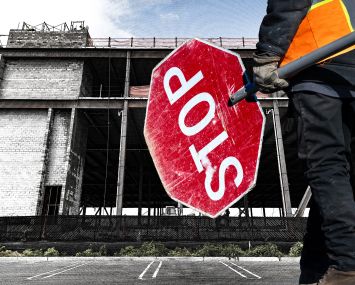Construction Attorney Warns, Developers need to Get off the Sidelines and do what they do best: Build
By Jotham Sederstrom February 14, 2012 2:02 pm
reprintsHe’s the Cassandra of the construction industry, the rabble-rouser of rubble.
Attorney Barry LePatner, founder of LePatner & Associates LLP and author of construction shock books Too Big to Fall: America’s Failing Infrastructure and the Way Forward and Broken Buildings, Busted Budgets, has his own 30,000-foot-high view looking down on the current state of New York City’s construction industry. He believes there will be a $25 trillion construction boom in New York and the rest of the country between now and the year 2035.

But from his view up on high, the industry is not as active as it needs to be.
“We are in the third year of a ‘new normal’ economic environment for real estate, design and construction,” said Mr. LePatner in an interview with The Commercial Observer.
What this has caused is a term of relative impotence, where he perceives all the big players in New York City sitting on a pile of cash, committing themselves to a state of frugality instead of prodigious development.
“They are loaded, according to every responsible, knowledgeable source. They are sitting on the sidelines with all the money they could ever want,” he said. “But they are not going to invest in many cases, other than the Relateds of the world, because they build and they have huge resources to draw on—or the Vornados or the SL Greens.”
Other players, he said, are not getting the access to construction funding due to the sheepish behavior of the banks.
“It is easier for them [the banks] to make vast billions of dollars off charging fees than it is to risk putting money in under the constraints they’ve allowed to bear to wit,” he said. Those wishing to start a project would need to put at least 40 percent of the costs down. Developers, meanwhile, want to put down next to nothing and let all the construction loans be financed. This leads to a period of stasis, Mr. LePatner adds.


